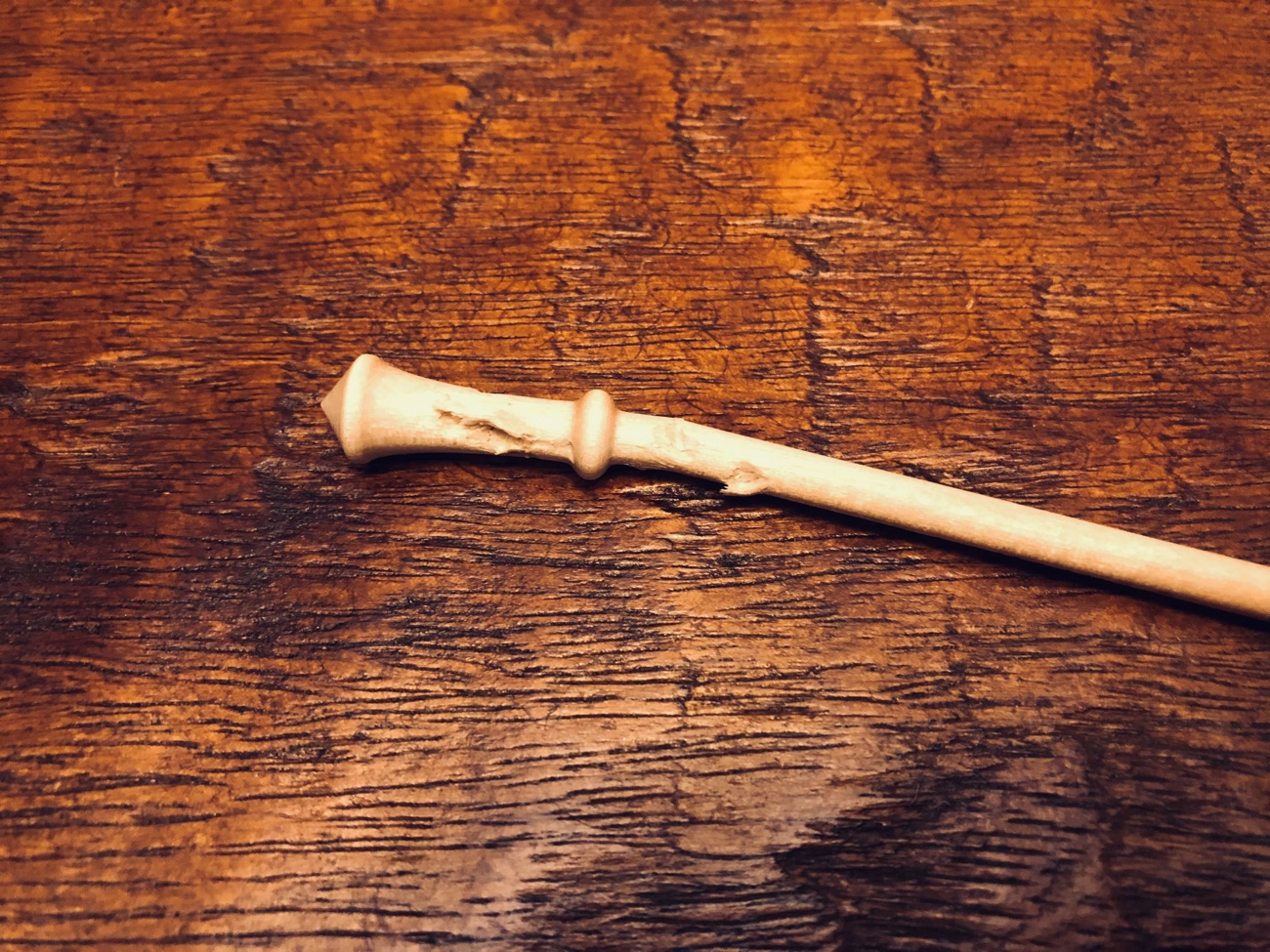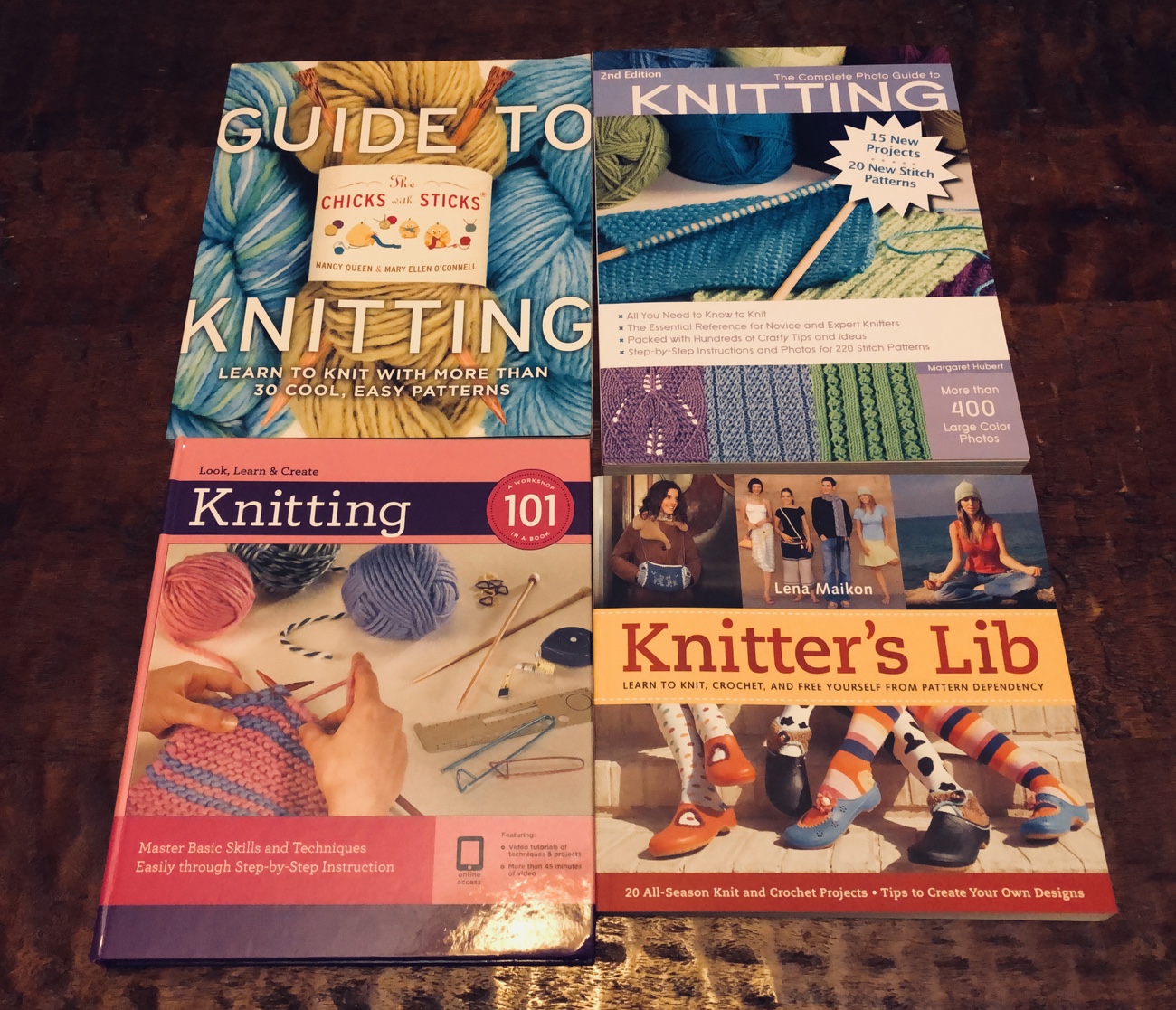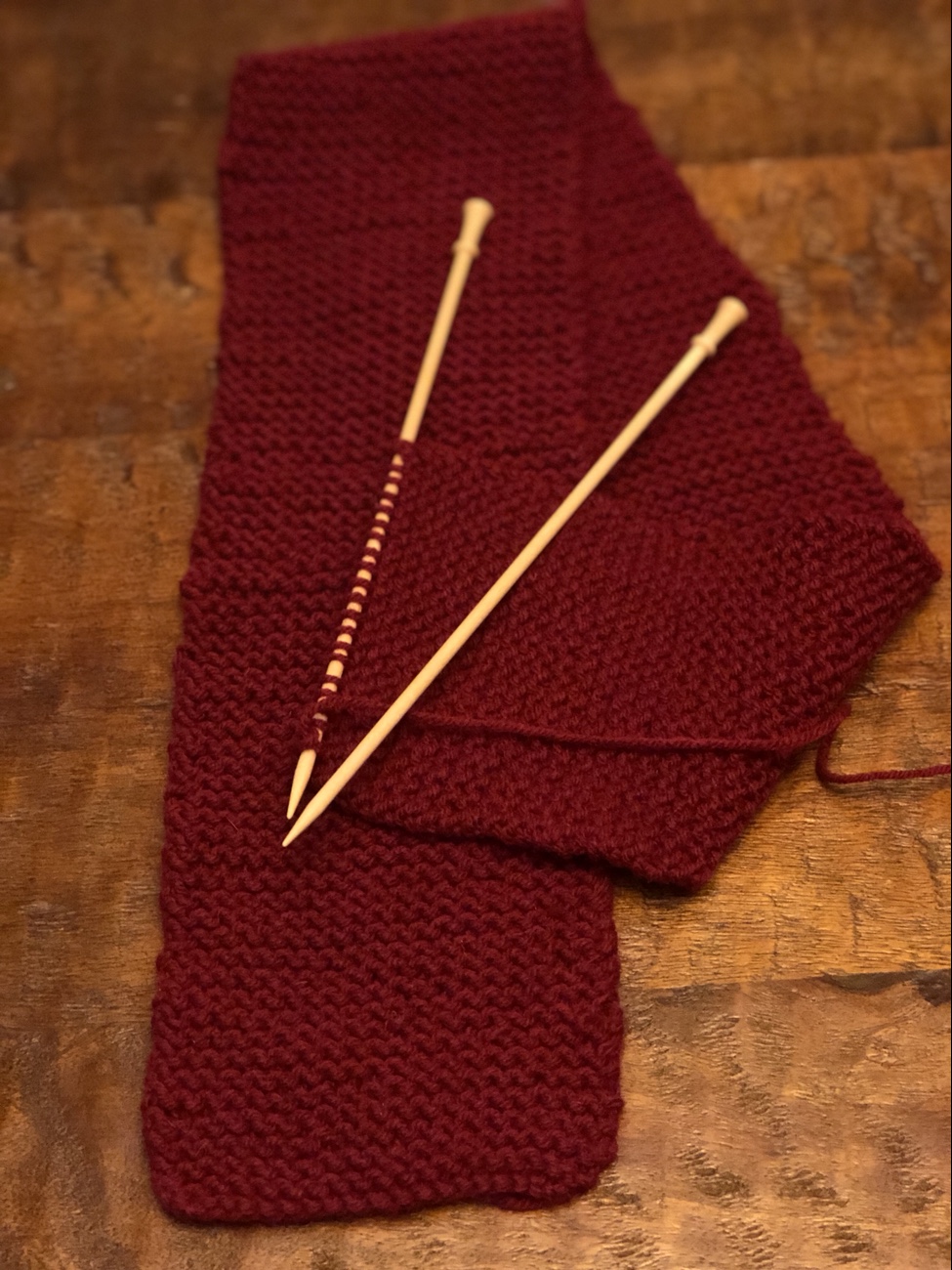
My knitting journey began a few months ago with a desire to make some knitted hats. I made a number of hats and a scarf on round looms of different sizes and was pleased with them, especially the hats. But I really wanted to learn to knit with needles, too, so my learning journey began this week.
Fortuitously, I already had a set of beautiful knitting needles ready to be put to use. These 10″ Brittany birch needles are incredibly smooth and light, a joy to handle, and almost too pretty to use…now I really want a pair of their gorgeous black walnut needles, too!

Since I’m self-taught, I bought several (used) reference books. Having begun with loom knitting, I had already discovered that having instructions/examples from multiple sources can be very helpful; a stitch, for example, may be diagrammed in a way that’s more comprehensible (to me, anyway) in one book than in another, but a different resource may most clearly demonstrate how to bind off. Multiple resources (including free online resources like this guide from Oregon State University Extension) let you pick and choose what works best for you.

Before I get ahead of myself, I want to be clear that all I’ve done at this point is cast on (many, many times) and knit stitch. And while the stitches may be the same as in loom knitting, the movements and feel are very different. Based on what I’ve tried so far, knitting with needles – even making the same stitches – seems more streamlined and natural to me.
It’s an elegant process. The sweeps of needle, the looping…the pas de deux of knitting feels almost balletic. It also feels like you become part of a long tradition of fiber artists – talented artisans who created useful and decorative items from yarn, including their own wool animals. Images of shearing sheep, washing wool, carding it, spinning it, dance through my head. Just touching soft wool yarn makes me imagine the animal from which it came. It’s powerful.
So I may just have waxed a bit rhapsodic about knitting, but it is much more engaging than I had thought. The stereotypes, right? Forget ’em! Knitting is practical, useful, and beneficial. And it’s not just for the ladies!
Knitting is appealingly orderly, rhythmic, and methodical. I find that while I still need to check my work periodically, I just get into a groove and go. The knitting flows. And the piece I’m creating grows. Occasionally, frogging is needed when a weird stitch manifests (how the hell did that get in there??), but I’ve made fewer mistakes with the needles, though I suspect I’ve made each of the most common ones listed in the OSUE guide – “dropped stitches, twisted stitches, split stitches, and holes…caused by having the yarn in the wrong position”. Learning opportunities!
Fortunately, mistakes are easier to correct on needles than on the loom, since I can quickly identify which loops need to go back onto the needle. It took some trial and error to determine how the loops need to go back onto the needle properly, but once that was mastered, corrections become very manageable. This tutorial describes how to pick up stitches before ripping back, to ensure you don’t lose any “live” stitches – I did end up, several times, ripping stitches back further than I’d intended. More practice, I guess!

My practice swatch has now turned into an emerging scarf. The pattern was so lovely and perfectly flat that I couldn’t just unravel it when I’d reached the point where it looked like a potholder, so I just kept going – and, ironically, a garter stitch scarf is the first pattern in one of my reference books. I have high hopes that this will be even nicer than that Cratchit scarf!

Comments are closed.